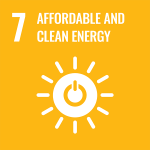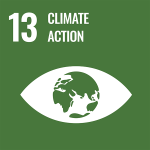Packaging Materials
Contributing to 42% of our total carbon footprint and therefore we must establish strategies to reduce carbon emissions. We accomplish this, in part, through lightweighting (reducing weight of our bottles and cans), as well as sourcing packaging material made from the majority recycled content. In China, we rolled out a
lightweighting project for aluminum cans where approximately 135 tons of aluminum were saved.
Product Cooling
We begin the use our scale to source and install more energy-efficient and eco-friendly chillers, coolers and refrigerants. In China, we required that only coolers labeled with Level 1 Energy Efficiency (representing the most energy-efficient models) should be purchased. Similar requirements are applied to our operations in India for chillers.
Agriculture
Working closely with our farmers, to build resilience through crop management, improved varieties, and risk mitigation tools, while also exploring how
agriculture can be part of the solution to reducing GHG emissions. We also build a soil health framework that can sequester atmospheric carbon dioxide.
Operations
We have implemented various measures to improve energy efficiency and reduce carbon emissions in our production and operations. We have replaced coal boilers with natural gas boilers, installed LED lighting and installed biogas collection system to recover a biogas to produce steam that would be reused in the brewing process. The carbon emissions from our operations were reduced by 23% compared to our 2017 baseline.Educating our suppliers on our 2025 Sustainability Goals and encouraging them to implement low-carbon production is one of our priorities. For example, in FY2020, two of our glass suppliers reconstructed their furnaces to burn natural gas instead of coal.
Logistics
Logistics accounts for approximately 5% of our total carbon footprint, making the transport industry a prime source for innovative sustainability solutions. We proactively embrace innovation to explore new approaches to achieve:
1. Green logistics,
2. Adopt new technologies to drive carbon reduction.
3. Pushing for the development of clean energy sources.
Green logistics KPIs are set and reviewed on an annual basis.
Over the past years, we have been working to curb CO2 emissions in the logistics channel by:
1. Deploying alternative energy vehicles and electric forklifts,
2. Upsizing truck capacities,
3. Reducing shipping distances and
4. Shifting from road to rail transportation in China.











